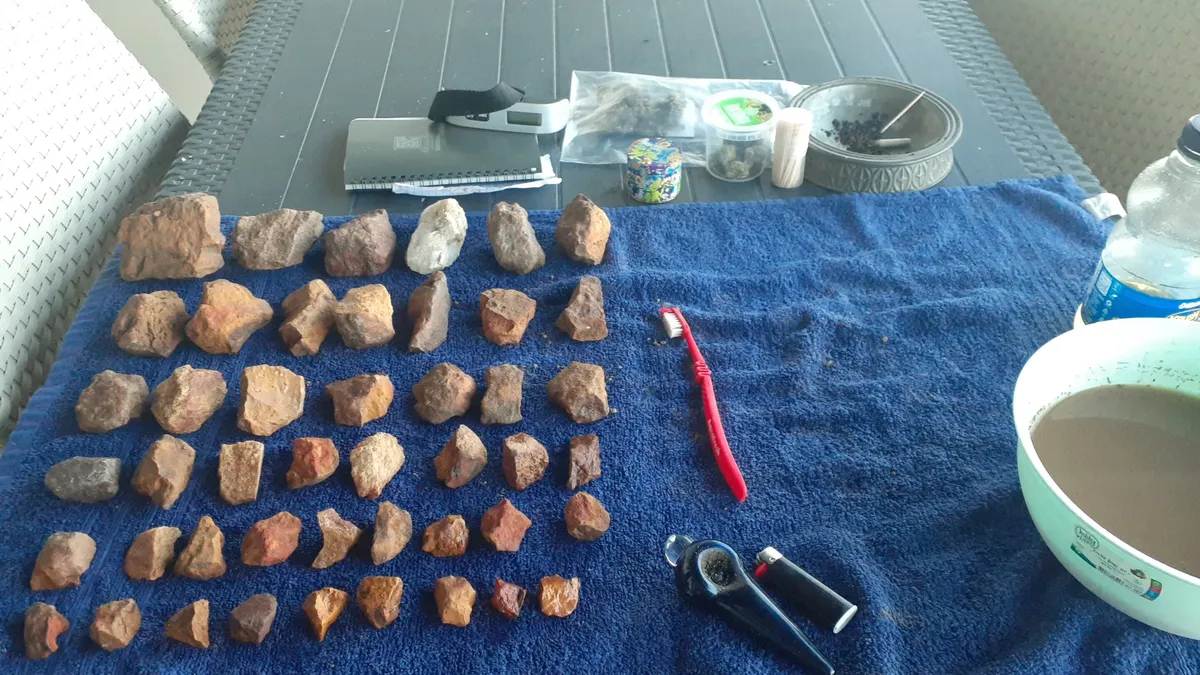
In a remarkable archaeological find on the southern coast of South Africa, researchers have uncovered thousands of stone tools crafted by ancient humans approximately 20,000 years ago. This discovery, made in a cave with a stunning view of the ocean, sheds light on the technological advancements of prehistoric people and how they adapted to their changing environment.
By meticulously examining the minute details of the chipped edges of these blades and stones, archaeologists can glean how the tools were produced. A study published in the Journal of Paleolithic Archaeology highlights the researchers' analysis of these stone tools and the implications their manufacturing techniques have on understanding prehistoric human behavior. “This is an important insight into how people who lived in this region were living, hunting, and responding to their environment,” explains Sara Watson, a postdoctoral scientist at the Field Museum's Negaunee Integrative Research Center and the lead author of the study.
The stone blades discovered date back to a period between 24,000 and 12,000 years ago, coinciding with the conclusion of the last major ice age. During this time, significant amounts of Earth's water were trapped in glaciers and ice caps, resulting in lower sea levels. Consequently, the region that is now the coast of South Africa was situated several miles inland. “Instead of being right on the water like they are today, these caves would have been near vast, open plains populated by large game animals like antelope,” Watson states. Prehistoric humans hunted these animals using their innovative tools and weapons.
The caves where these tools were found belong to what archaeologists refer to as the Robberg technocomplex. Today, these caves are perched on a towering cliff overlooking a rocky beach, requiring a daunting 75-foot climb from the shoreline. “We had safety ropes and a staircase made of sandbags, and we had to be harnessed in while doing the excavation,” Watson recounts. Each day, Watson and her colleagues ascended with their excavation and photography equipment, which could weigh up to 50 pounds per person.
Given the extreme age of these archaeological sites, the excavation process required meticulous attention to detail. “Since these are extremely, extremely old sites, we had to be very careful with our excavation,” Watson emphasizes. The team employed specialized tools such as tiny dental instruments and mini trowels to delicately remove each layer of sediment, ensuring that they preserved the integrity of the site.
Underneath layers of ancient dust and dirt, Watson and her team uncovered thousands of stone tools, including small, sharp blades and larger rock pieces known as cores. While many may focus on the detached pieces, Watson finds the cores particularly fascinating. “The core shows us the specific methods and order of operations that people went through to make their tools,” she explains.
The researchers observed distinct patterns in how the cores were reduced to produce smaller blades. “In many of these technologies, core reduction is very specific. It’s something that you are taught and learn, which is where the social information lies,” says Watson. The study revealed that similar core reduction techniques were employed across different sites, suggesting that these ancient people shared ideas and methods. For example, one specific technique found in the Robberg caves has also been identified hundreds of miles away in regions like Namibia and Lesotho, indicating intentional knowledge transfer rather than mere coincidence.
Overall, Watson asserts that this study reveals the vast potential for learning about the Robberg caves and the prehistoric humans who inhabited them. “We have a very long and rich history as a species, and humans go back much farther in time than most people realize,” she notes. The findings suggest that people living around the last ice age exhibited behaviors and social structures remarkably similar to those of modern humans.